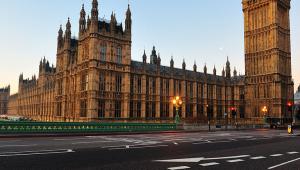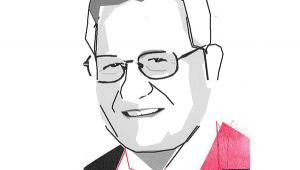One of the core responsibilities of elected councillors is to hold the political leadership and officers of their authority to account. This can in part be achieved through effective scrutiny committees – a mechanism that is vital to the democratic process and the legitimacy of local government,
However a recent report from Grant Thornton (based on a poll of over 100 senior council officers and members for Grant Thornton’s annual local authority governance review) found that 43% agreed there was insufficient interrogation from their scrutiny committees.
The examination by Grant Thornton also included a review of 2013/14 governance statements for 140 English councils, which found a wide variation in the number of meetings held by the committees each year. Although the average was 17, some councils had just one meeting whilst one council had 66.
In addition to this report, The Centre for Public Scrutiny (on whose advisory board I sit) has called on local authorities to ‘up their game’ in respect of scrutiny in light of the child care failures in Rotherham.
The hard (and for me, deeply disappointing) reality is that in all too many (actually, I suspect the majority) of councils of all sizes, status and political composition, scrutiny has come to be regarded by both councillors and senior officers as less important than the role of cabinets and leaders. And far too often, it has not attracted the most politically astute councillors (though there are plenty of exceptions to this generalisation) and has been under resourced in terms of officer and financial support.
Effective scrutiny should be able to detect and nip problems in the bud. It can challenge policy and operational practice on behalf of the community and service users. It can be free of vested interests. It can also contribute to policy development and indeed, should be enabled to do this. At the time of cuts and major change one of scrutiny’s core roles should be to test proposals before implementation and ensure that all intended and unintended consequences are understood, objectives set and hold those responsible for the proposals held to account.
Local government has a leadership role for shaping ‘places’ and leading communities. This should mean that councils enable and use their scrutiny committees to hold the NHS, DWP, police and other public service providers to account. When services are outsourced, scrutiny should be involved in holding both client and provider to account. On behalf of their ‘places’, and the residents and local businesses of those ‘places’, scrutiny committees should be willing and able to hold to account and question a range of business, community and public sector bodies and their leaders for the decisions that they take, and which impact on the council area.
Of course, scrutiny is not the only means of holding political leaderships, cabinets and senior officers to account. There must also be questions and debates in committee, and the opportunity to ‘call in’ cabinet decisions.
In light of recent scandals and failures of governance including Rotherham, I believe it is more urgent than ever to promote strong and effective local government scrutiny.
Aspiring chairs of scrutiny committees should model themselves on Margaret Hodge as the chair of the Commons Public Accounts Committee and similar exemplar scrutineers.
I propose a 15-point charter of intent that every council and scrutiny committee should consider:
- reaffirming a political commitment to effective, timely and responsive scrutiny
- attracting high-calibre councillors to chair and be members of scrutiny committees, and acknowledge their importance by, for example, paying scrutiny chairs the same allowances as cabinet members, and by leaders making it clear that they will be looking to scrutiny performance when considering appointments to their cabinets
- appointing a senior officer (possibly directly reporting to the CEO on the same status as the monitoring and/or Section 151 officer) – with responsibility for supporting the scrutiny function and adequately staffing the support to scrutiny
- providing budget allocations to scrutiny committees so that they can appoint expert advisors for particular enquiries
- holding sessions to interrogate the council leader and chief executive at least twice a year with wide open agendas – not of course that this should prevent them attending sessions on specific issues at any time
- ensuring that all major contracts for services and goods require the provider to attend and be examined by scrutiny committees on their performance and that of the local authority’s client function
- ensuring that scrutiny committees can and are enabled to contribute to policy development and to instigate such, based on the evidence available to them; and specifically involving scrutiny committees when significant policies including budget strategy and potential outsourcing decisions are being initially considered, and then at all stages of their development and implementation
- scrutiny committees to design (in consultation with service users, the wider public and other stakeholders) a set of key performance indicators for every council service (whether directly provided or not) – against which to hold the executive to account with regular public reviews, involving where necessary public examination of the key parties
- adopting a ‘whole place’, not solely a ‘whole council’ approach to scrutiny, and thus being ready to invite representatives of a range of public agencies, local businesses and wider civil society; and commissioning annual surveys of stakeholder and public opinion on the council, its performance and of the ‘place’
- partnering with other local authorities to ensure effective councillor scrutiny with accountability of regional and sub-regional bodies
- involving service users and their representatives on the committee or sub-committees when undertaking every enquiry
- publishing a report on scrutiny and requiring the council leadership to publish an annual report on how s/he and the council has responded to scrutiny committee reports
- connecting with the public through social media, accessible reports, calls for ideas for enquiries, webcasting scrutiny committee and sub-committee meetings, and widely promoting information on the forthcoming enquiries and sessions
- seeking the views of the public and other stakeholders on the enquiries which scrutiny committees should potentially undertake
Central government has to support this approach, and should make it very clear (with legislation and regulation where necessary) that all public and quasi-public bodies including the NHS, police, academies, free schools, colleges and universities as well central departments such as the DWP and Jobcentre Plus and their contractors, should respond positively to invitations to attend and submit evidence to local authority councillor scrutiny committees. Central and local government should also agree together how council scrutiny committees can fulfil an equivalent role to the Public Accounts Committee for the ‘place’ (based on a “Total Place” approach).
With low public confidence in the political process and public institutions, with the severe financial cuts and constraints across the public sector and growing public expectations for quality, responsiveness and accountability, local government could and, I believe, should use an enhanced approach to scrutiny to contribute to rebuilding credibility and confidence.
Even with these cuts and tight budgets, investment in effective scrutiny should pay for itself in terms of better governance, more effective use of resources, greater accountability and improved public confidence. I hope that councils and leaders will have the courage to act!












